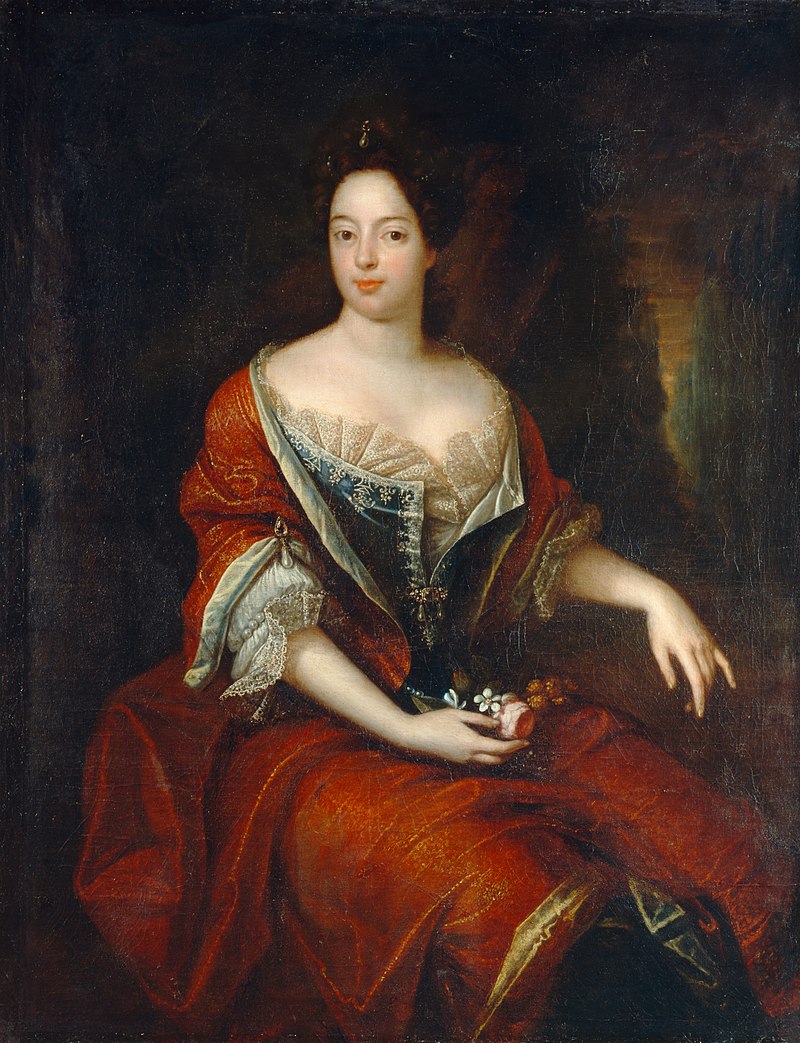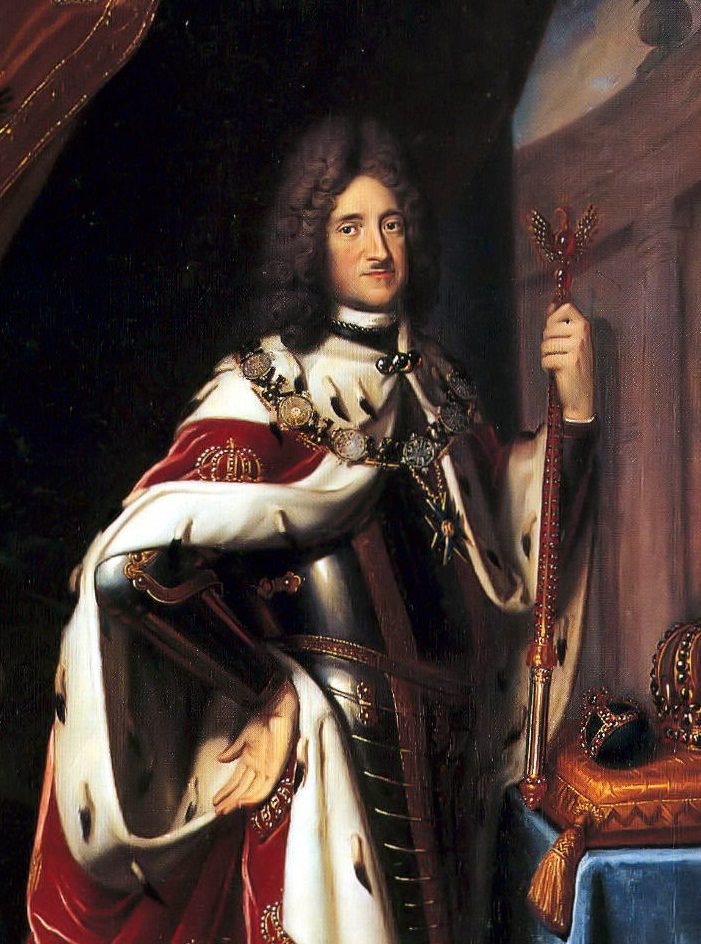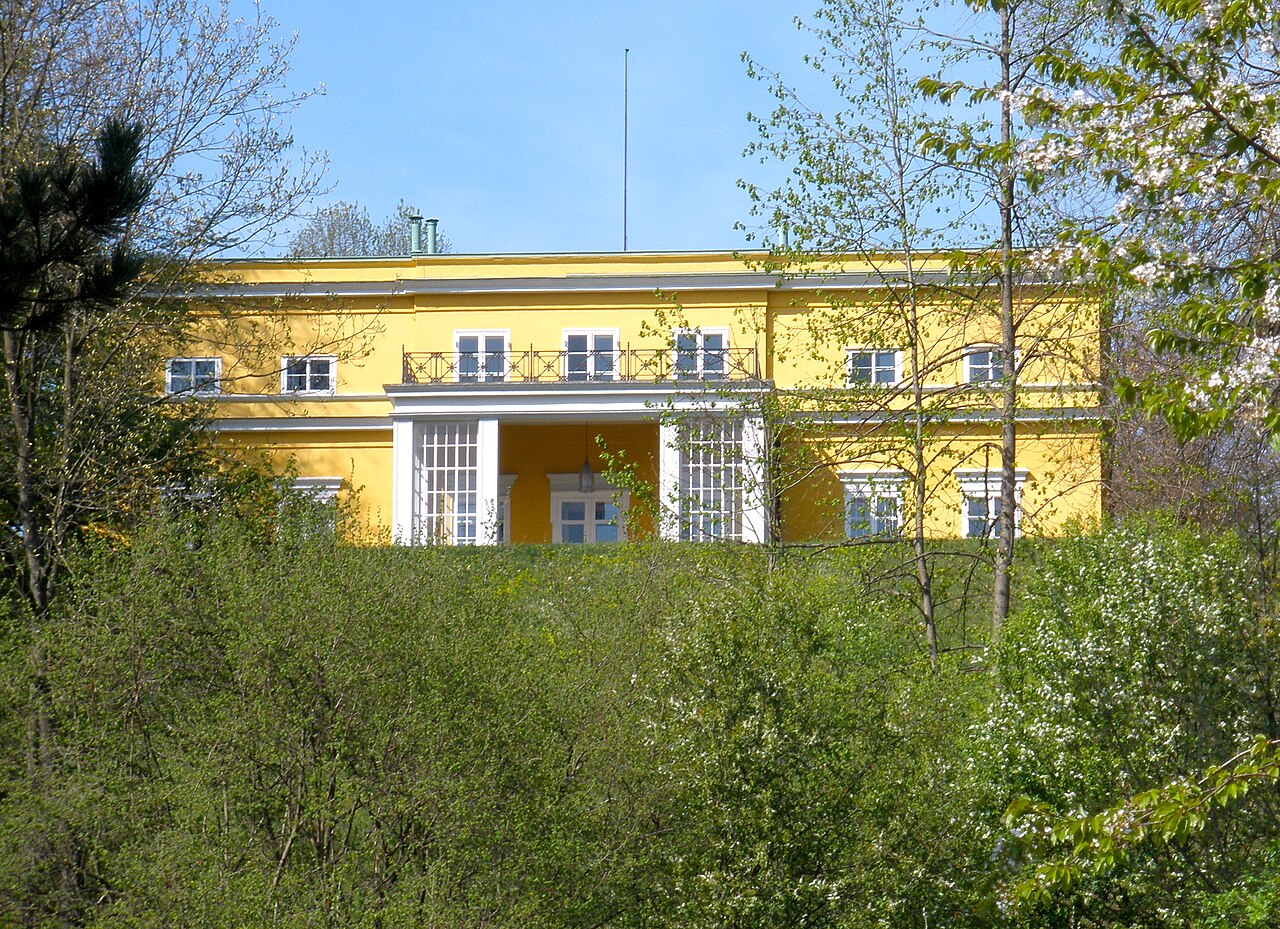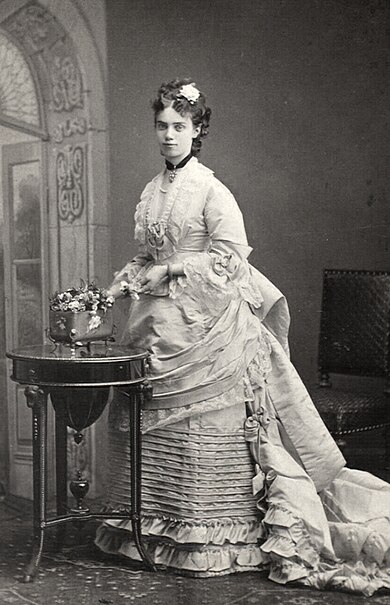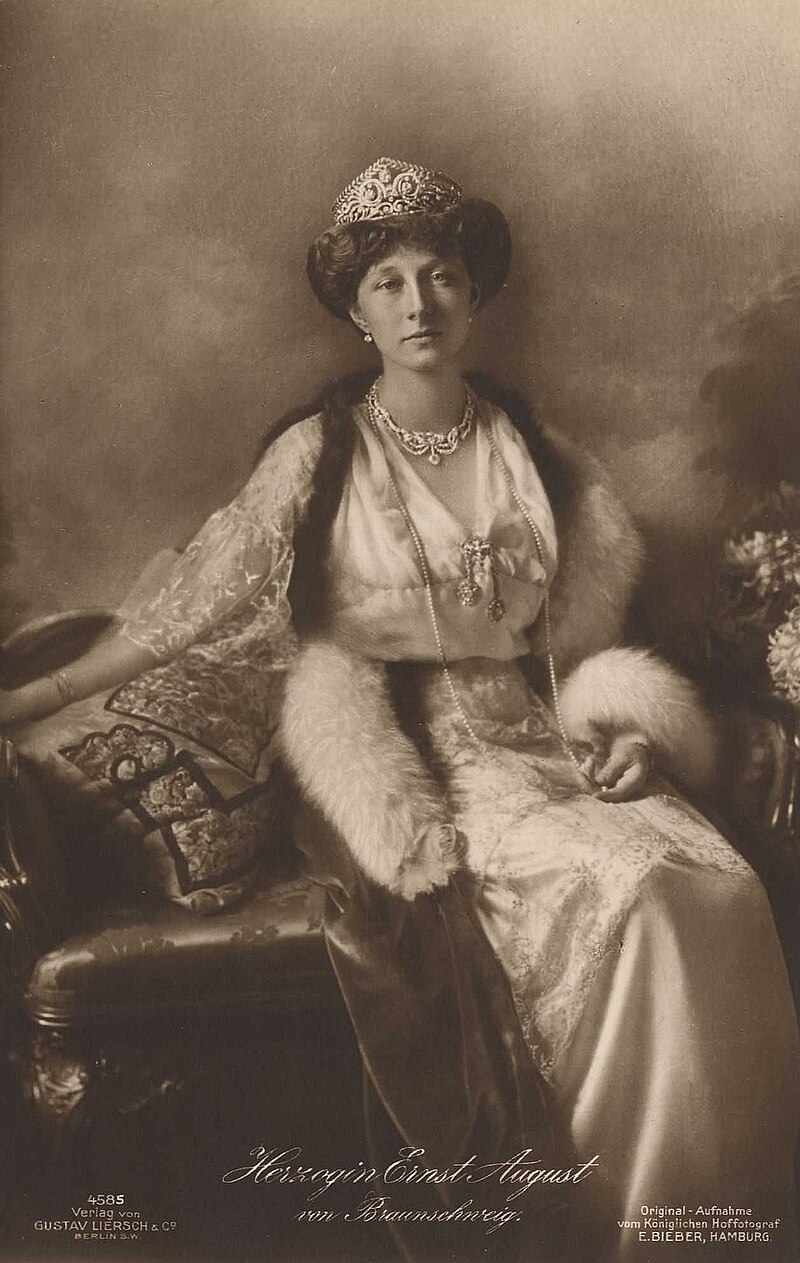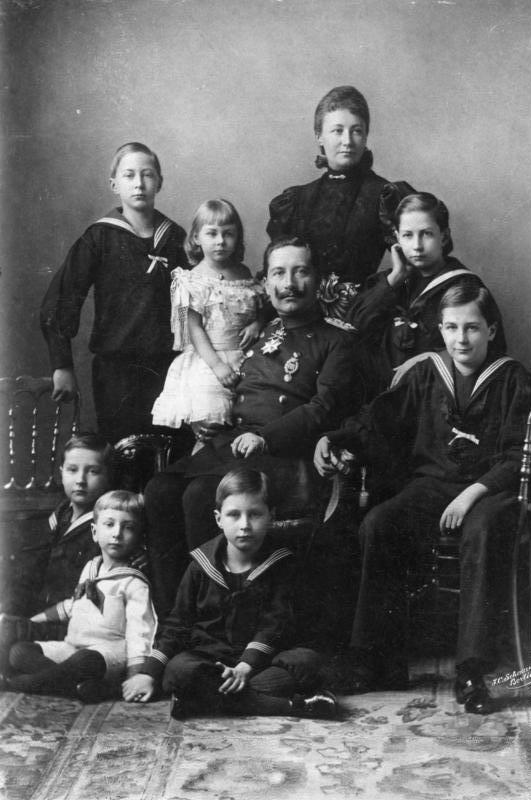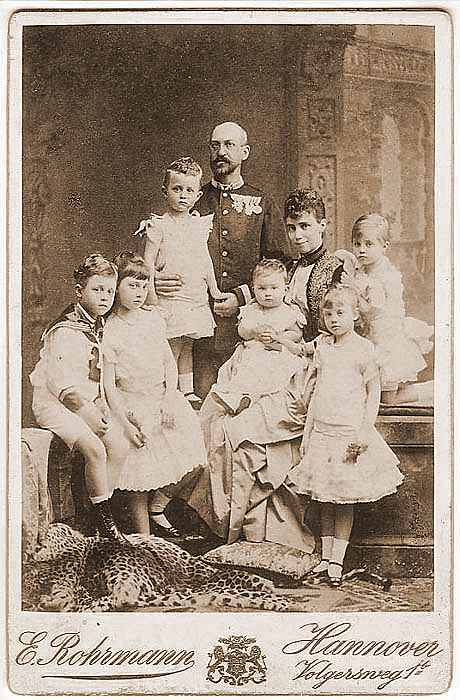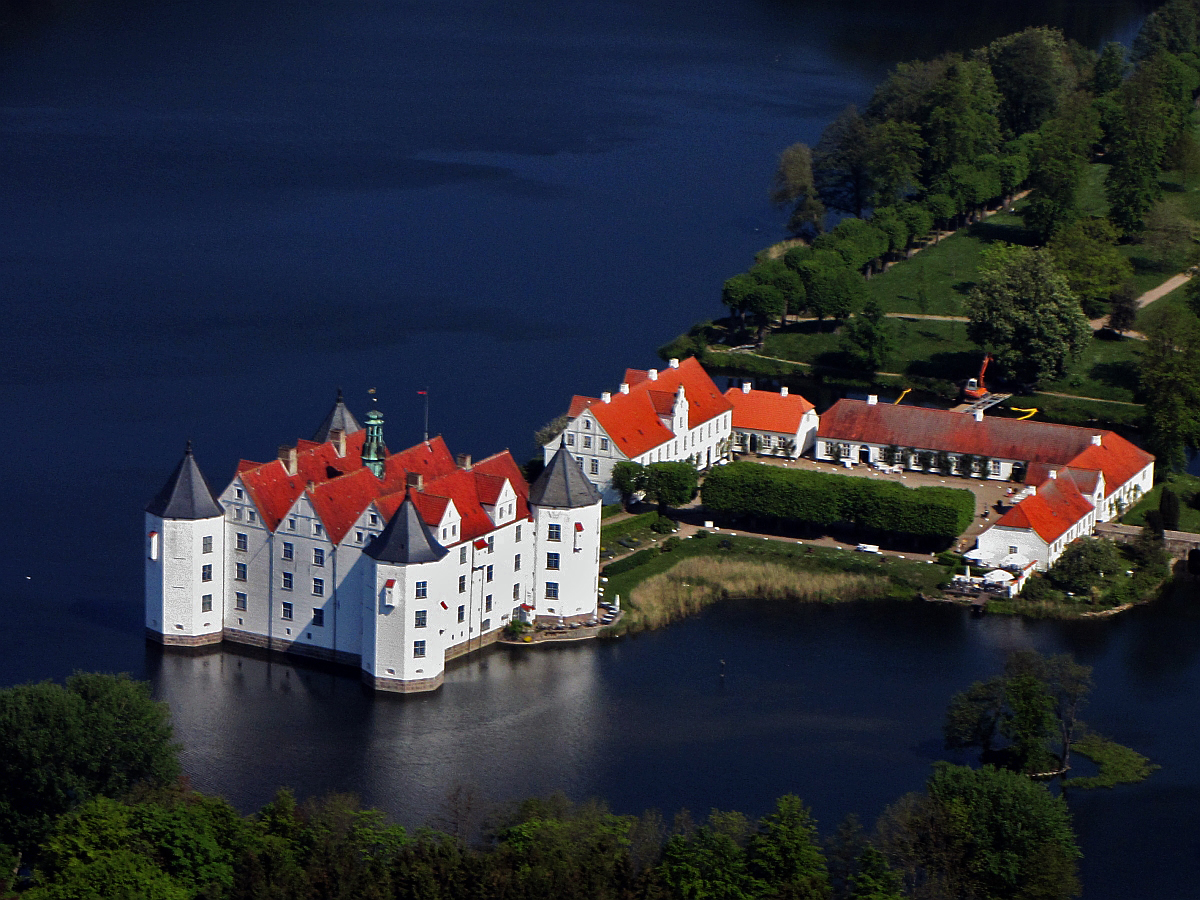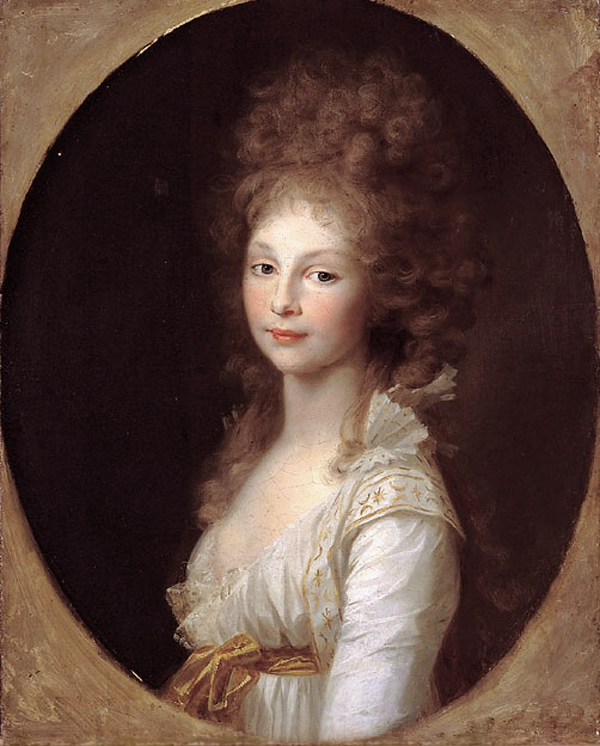by Susan Flantzer © Unofficial Royalty 2020

Philip Christoph von Königsmarck; Credit – Wikipedia
Count Philip Christoph von Königsmarck, the lover of Sophia Dorothea of Celle, Electoral Princess of Hanover (the wife of the future King George I of Great Britain and the mother of King George II of Great Britain) disappeared from the Leineschloss in the Electorate of Hanover, now in the German state of Lower Saxony, and was never seen again. Born on March 4, 1665, in Stade, then part of the Swedish province of Bremen-Verden-Wildeshausen, now in Lower Saxony, Germany, Philip Christoph was the second of the two sons and the youngest of the four children of Count Kurt Christoph von Königsmarck and Maria Christina von Wrangel. Despite their German name and coming from an old Brandenburg noble family, the family considered themselves Swedish.
Philip Christoph had three siblings:
- Karl Johann von Königsmarck (1659 – 1686), unmarried, served in the Swedish Army, died during the Morean War
- Maria Aurora von Königsmarck (1662 – 1728), official mistress of Augustus II, Elector of Saxony and King of Poland
- Amalia Wilhelmina von Königsmarck (1663 – 1740), married Count Carl Gustaf Lewenhaupt, had one son
Philip Christoph’s father Count Kurt Christoph von Königsmarck was a Major General in the Swedish Army and served as Deputy Governor of the Swedish possessions in Germany. In 1671, he left the Swedish Army to serve in the army of Willem III, Prince of Orange (the future King William III of England), participating in the Dutch campaign against the French. On October 10, 1673, when Philip Christoph was eight years old, his father was killed at the age of 39 at the Siege of Bonn by friendly fire from an accidental cannon shot.

Philip Christoph von Königsmarck at an early age; Credit – Wikipedia
During his childhood, Philip Christoph served as a page at the court of Georg Wilhelm, Prince of Celle. Celle was a small principality, now in Lower Saxony, Germany. There he became friends with Princess Sophia Dorothea of Celle, Georg Wilhelm’s only child, who was a year younger than Philip Christoph. At the age of 16, Sophia Dorothea married her first cousin, 22-year-old Georg Ludwig, Electoral Prince of Hanover and Hereditary Prince of Brunswick-Lüneburg, the eldest son of Ernst August, Elector of Hanover, Duke of Brunswick-Lüneburg and Sophia of the Palatinate, commonly referred to as Electress Sophia of Hanover. Electress Sophia of Hanover’s mother was Elizabeth Stuart, the second child and eldest daughter of King James VI of Scotland/King James I of England. It was through this descent and the exclusion of Catholics from the British throne, that Sophia Dorothea’s husband Georg Ludwig became King George I of Great Britain when Queen Anne, the last ruler of the House of Stuart, died. However, Sophia Dorothea of Celle was never Queen of Great Britain but she is an ancestor of the British Royal family (and other European royal families) through her son King George II of Great Britain.
After spending some time wandering through Europe, Philip Christoph found himself a wealthy man as the heir of his uncle and elder brother who had both died in battle. In 1688, Philip Christoph went to Hanover where he entered into the service of Sophia Dorothea’s father-in-law Ernst August, Elector of Hanover, Duke of Brunswick-Lüneburg. He participated in a campaign against France and became colonel of Ernst August’s bodyguard. Philip Christoph was regularly present at social events at the court of Hanover.

Sophia Dorothea, Electoral Princess of Hanover in 1686; Credit – Wikipedia
The marriage of Sophia Dorothea and Georg Ludwig (called George hereafter) was happy at first, but soon both George and Sophia Dorothea found affection elsewhere. George fell in love with one of his mother’s ladies-in-waiting, Melusine von der Schulenburg, and Sophia Dorothea fell in love with her childhood friend Philip Christoph von Königsmarck. Their affair started around March 1692. Despite warnings, from her mother and friends, Sophia Dorothea and Philip Christoph wrote letters to each other, met secretly, and planned to escape Hanover together. In 1694, Countess Clara Elisabeth von Platen, the mistress of Ernst August, Elector of Hanover, Duke of Brunswick-Lüneburg, tried to marry her daughter to Philip Christoph Königsmark but he declined. Because of this insult by Königsmark, Clara Elisabeth revealed his affair with Sophia Dorothea to Elector Ernst August.
On the morning of July 2, 1694, after a meeting with Sophia Dorothea, 29-year-old Philip Christoph von Königsmarck disappeared from the Leineschloss in Hanover and was never seen again. It was widely believed he was secretly murdered that same day. Officially, Philip Christoph von Königsmarck is still a missing person. His disappearance became a state affair and news of his disappearance spread throughout the royal courts of Europe and the general public. Bones were found at Leineschloss Castle during a 2016 renovation project, however, tests proved that some of the bones were from animals and the human bones came from at least five different skeletons. None of the remains have been proven to belong to Philip Christoph von Königsmarck.

Sophia Dorothea with her two children; Credit – Wikipedia
On December 28, 1694, a tribunal of judges and Lutheran Church officials declared the marriage of George and Sophia Dorothea dissolved on the grounds of Sophia Dorothea’s desertion. Meanwhile, 28-year-old Sophia Dorothea had been moved to the Castle of Ahlden in her father’s Principality of Celle. She did not know that Königsmarck had disappeared and hoped to be reunited with him. Finally, Sophia Dorothea was told about the terms of the marriage dissolution. Because she was considered the guilty party, she was not allowed to remarry, would never again see her two children (the 11-year-old future King George II of Great Britain and the 7-year-old future Queen Sophia Dorothea in Prussia, wife of King Friedrich Wilhelm I in Prussia), and would be kept as a prisoner at the Castle of Ahlden for the remainder of her life. The Castle of Ahlden had a guard unit of 40 soldiers with five to ten soldiers guarding the castle around the clock. Sophia Dorothea had a household consisting of two maids of honor, several maids, and other staff for the household and kitchen, who were all chosen for their loyalty to Hanover.

Castle of Ahlden; Credit – Wikipedia
Although Sophia Dorothea spent 32 years in captivity, she received an income that allowed her to live in the style of a princess and she was able to go for drives in her coach with an escort. Her father refused to visit her, but her mother did make visits, and unsuccessfully tried to obtain her release by asking Queen Anne of Great Britain for help. Sophia Dorothea apparently drowned her sorrows in the pleasure of eating, and became quite obese, increasingly suffering from fevers and indigestion. She suffered a stroke in August 1726 and never again left her bed. Sophia Dorothea refused medical attention and food, and died on November 13, 1726, at the age of 60. Her former husband, now King George I of Great Britain, would not allow mourning at the British court and was furious when he learned that his daughter had ordered court mourning in Prussia.
Because the guards at the Castle of Ahlden had no funeral or burial instructions, Sophia Dorothea’s remains were placed in a lead coffin and stored in the castle cellar. In January 1727, orders came from London to bury the remains without any ceremony in the cemetery of Ahlden. However, this was impossible because of weeks of heavy rains and the coffin remained in the castle cellar. Finally, in May 1727, Sophia Dorothea was buried in the middle of the night beside her parents at the Stadtkirche St. Marien (link in German) in Celle. Her former husband King George I died four weeks later after receiving a deathbed letter from Sophia Dorothea cursing him, and their son acceded to the British throne as King George II.
This article is the intellectual property of Unofficial Royalty and is NOT TO BE COPIED, EDITED, OR POSTED IN ANY FORM ON ANOTHER WEBSITE under any circumstances. It is permissible to use a link that directs to Unofficial Royalty.
Works Cited
- De.wikipedia.org. 2020. Kurt Christoph Von Königsmarck. [online] Available at: <https://de.wikipedia.org/wiki/Kurt_Christoph_von_K%C3%B6nigsmarck> [Accessed 9 May 2020].
- De.wikipedia.org. 2020. Philipp Christoph Von Königsmarck. [online] Available at: <https://de.wikipedia.org/wiki/Philipp_Christoph_von_K%C3%B6nigsmarck> [Accessed 9 May 2020].
- En.wikipedia.org. 2020. Philip Christoph Von Königsmarck. [online] Available at: <https://en.wikipedia.org/wiki/Philip_Christoph_von_K%C3%B6nigsmarck> [Accessed 9 May 2020].
- Flantzer, Susan, 2015. Sophia Dorothea Of Celle, Electoral Princess Of Hanover. [online] Unofficial Royalty. Available at: <https://www.unofficialroyalty.com/sophia-dorothea-of-celle-electoral-princess-of-hanover/> [Accessed 9 May 2020].
- Sv.wikipedia.org. 2020. Philip Christoph Königsmarck. [online] Available at: <https://sv.wikipedia.org/wiki/Philip_Christoph_K%C3%B6nigsmarck> [Accessed 9 May 2020].
- Van der Kiste, John, 2013. The Georgian Princesses. New York: History Press.

